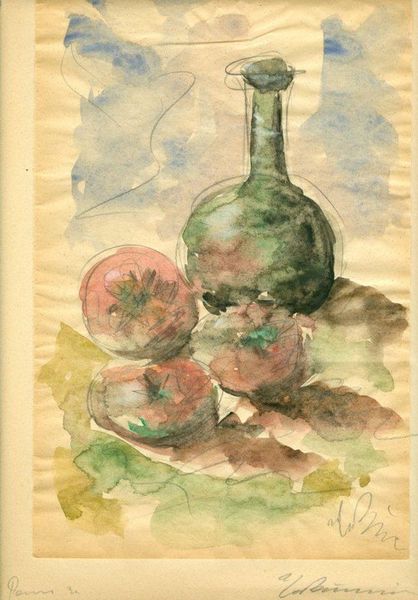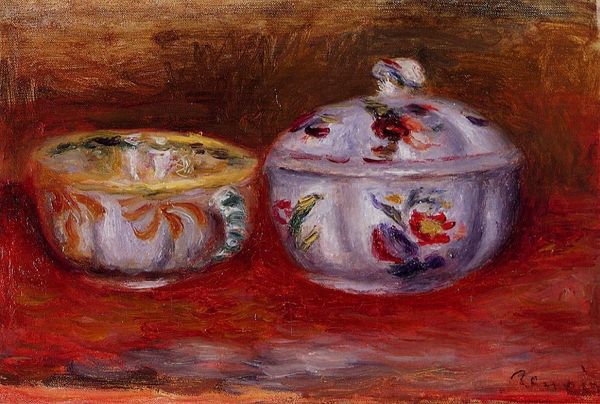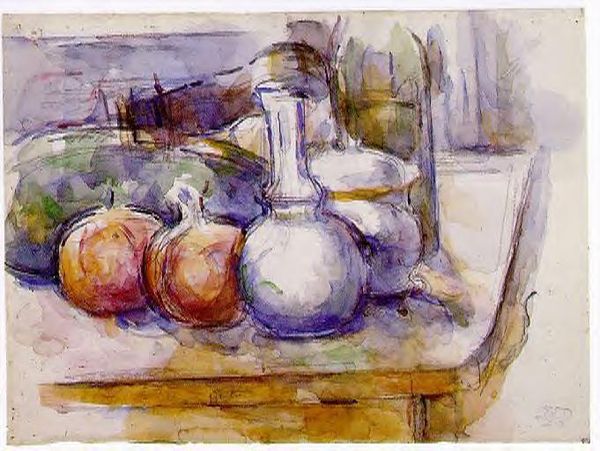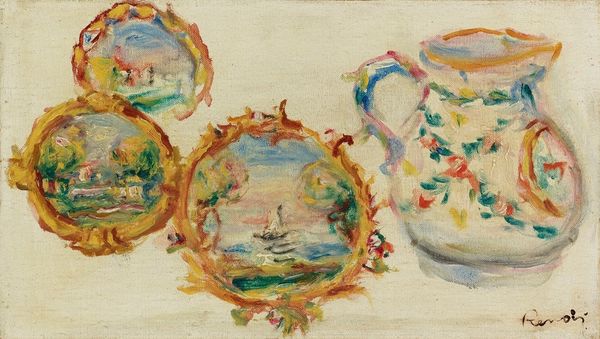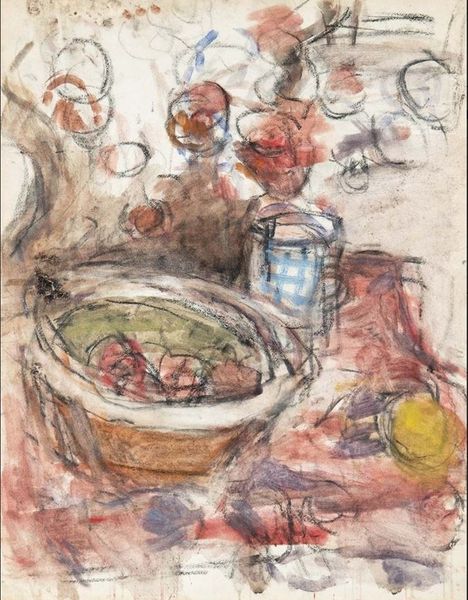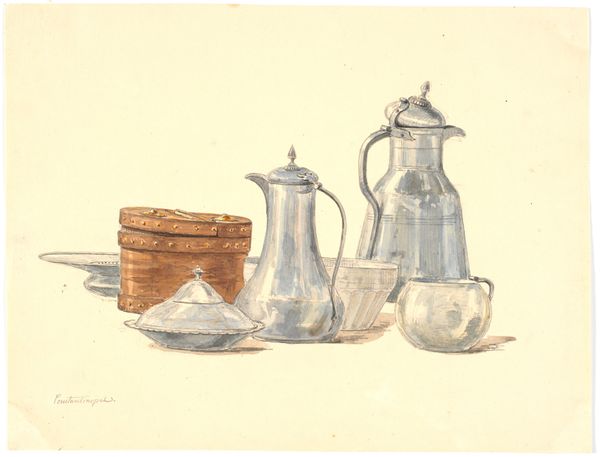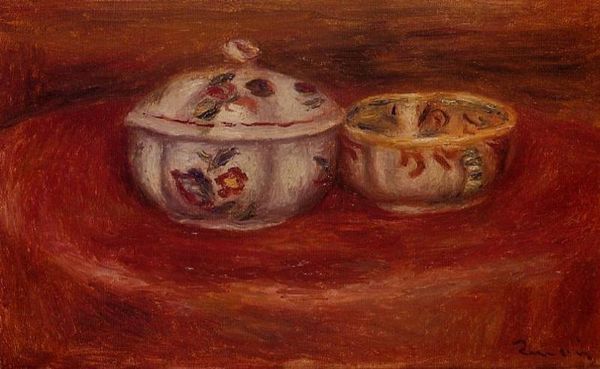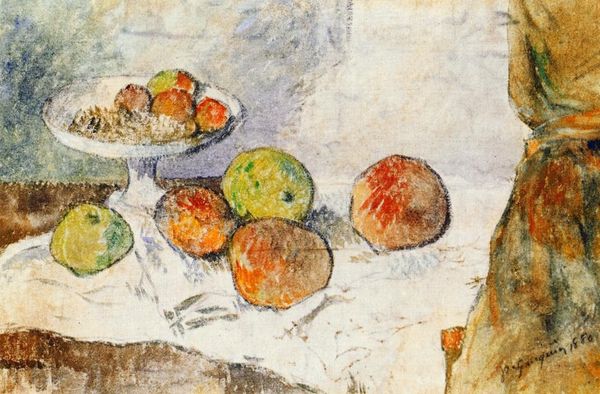
painting, photography, watercolor
#
still-life
#
painting
#
form
#
photography
#
watercolor
#
intimism
#
abstraction
#
line
#
modernism
#
watercolor
Copyright: George Bouzianis,Fair Use
Editor: This is George Bouzianis's "Still Life with Fruit and Pans," created in 1929 using watercolor and, it seems, ink or pencil for the lines. It feels very delicate and provisional, like a memory of a still life rather than a depiction. What do you see in this piece, beyond the surface? Curator: This work, created during a period of immense social and political upheaval in Europe, embodies the anxieties and the yearning for stability common in Modernist art. Look at how Bouzianis employs abstraction and intimism. How do these elements function, not just as aesthetic choices, but as a kind of quiet resistance? Editor: Resistance? It seems so...domestic. Curator: Exactly! Intimacy can be a powerful form of resistance, particularly when explored by artists grappling with shifting cultural norms. Bouzianis focuses on domestic objects and a traditionally feminine theme to challenge established power structures. Think about it – the very act of elevating the domestic, rendering it worthy of artistic attention, disrupts the traditionally patriarchal art historical canon. What statement might he be making by focusing on something so intimate, almost fragile? Editor: So, by focusing on simple, everyday items, Bouzianis makes a statement about the value of these small moments and overlooked spaces? Curator: Precisely. This wasn't just a still life; it’s an articulation of value. Bouzianis lived in a society rapidly changing. He might ask us to consider what truly nourishes us. What did you take away from this piece? Editor: I hadn't thought about it as resistance, but I see it now. It reframes the importance of quiet moments and questions our perception of what is valuable during those tumultuous times. Curator: Art invites us to reconsider established views. Hopefully, by understanding historical and societal context, you can view this watercolor as more than just pretty objects.
Comments
No comments
Be the first to comment and join the conversation on the ultimate creative platform.

